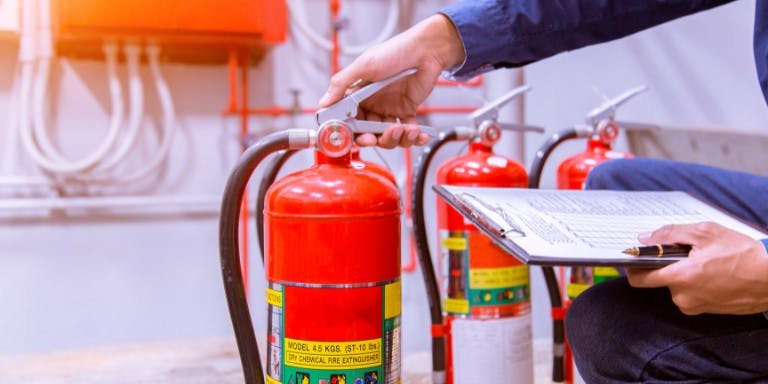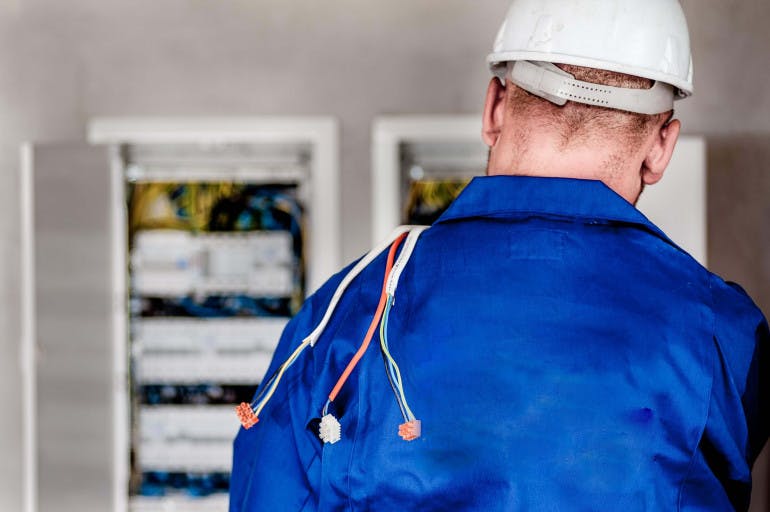First published on Monday, September 30, 2024
Last updated on Monday, September 30, 2024
Fire prevention in the workplace is much more than just being your legal responsibility. As a business owner in the UK, you need to make sure your workplace is prepared for the unexpected so you can protect your employees, property, and business continuity.
That’s why we’re going to walk you through the importance, legal requirements, and best practices for implementing fire safety measures in your workplace.
Why fire safety matters?
Imagine this: a fire breaks out in your office. Panic ensues as employees scramble to find the nearest exit. In the chaos, valuable equipment and documents are destroyed, and the business grinds to a halt. Worse still, people's lives are put at risk.
This is why fire safety is non-negotiable.
What is fire safety at work?
Fire safety at work involves practices and precautions designed to reduce fire risk and ensure the safety of employees and visitors. It includes fire prevention measures, emergency procedures, and training employees to respond to a fire.
Every business should have a fire safety plan outlining the steps to prevent fires and protect lives and property. But who is responsible for fire safety in the workplace?
While everyone has a role, employers, business owners, and designated safety officers are ultimately responsible for setting and following fire safety protocols.
Legal responsibilities for fire prevention
In the UK, fire safety law is clear—employers must reduce fire risks and ensure safe escape routes. The Regulatory Reform (Fire Safety) Order 2005 and the Health and Safety at Work Act require businesses to regularly assess and manage fire risks. Ignoring these rules could lead to fines or, worse, imprisonment.
As an employer you are required to:
Carry out regular fire risk assessments
Inform employees of identified risks and actions taken
Provide and maintain fire safety equipment
Train employees on fire safety procedures, including evacuation plans
If you need clarification about your legal obligations, BrightSafe's health and safety advice line can help you navigate the complexities and stay on the right side of the law.
Identifying fire hazards and risks
Regular fire risk assessments are key to identifying potential dangers before they become serious problems. Whether it's overloaded electrical outlets or flammable materials stored incorrectly, fire hazards are often easy to spot if you're paying attention. Because it only take’s three things for a fire to start—heat, fuel and oxygen.
Common fire hazards include:
Overloaded electrical outlets
Improperly stored flammable materials
Blocked emergency exits
Faulty wiring or malfunctioning appliances
Combustible materials near heat sources
Your workplace is unique, so your fire risk assessments should be too. The Health and Safety Executive (HSE) recommends reviewing your risk assessments regularly, mainly when significant changes occur in your workplace, such as new equipment or changes in layout.
BrightSafe's risk management solution can help you conduct tailored assessments and ensure nothing is overlooked. Just, remember that a competent person must conduct the fire risk assessment.
For information on what is meant by a competent person ask Bright Brainbox: Who is a health and safety competent person?
Implementing fire safety measures and emergency procedures
Once you've identified potential fire hazards, it's time to implement fire safety measures. These steps should include:
Fire detection and warning systems: Ensure your workplace has smoke detectors and fire alarms.
Fire extinguishers: Place fire extinguishers in easily accessible locations and regularly check that they're in working order.
Emergency evacuation plans: Develop clear evacuation plans and practice regular fire drills so employees know exactly what to do in an emergency.
Communicating these procedures to all employees is essential to ensuring everyone is prepared for a fire emergency.
Promoting fire safety awareness and training
You can have all the equipment and procedures in place, but it's only useful if your employees are trained to use them. That's why fire safety training is so necessary.
Make sure your team knows how to:
Use fire-fighting equipment
Ensure employees can confidently use fire extinguishers and other tools.
Follow evacuation procedures
Conduct regular evacuation drills so employees know the fastest, safest ways to exit the building.
Practice fire safety best practices
Promote a fire safety culture by encouraging employees to report potential hazards and take steps to prevent fires.
By fostering a proactive safety culture, you'll reduce the chances of fire incidents and ensure quick responses when they do happen. The Health and Safety Executive (HSE) also advises that employees are regularly updated on changes to fire safety protocols and trained accordingly.
Maintaining fire safety over time
Fire safety isn't a one-time task—it requires regular upkeep:
Regular maintenance of fire safety equipment is crucial
Smoke detectors, fire alarms, and extinguishers should be inspected and maintained on a regular basis to ensure they function effectively when needed.
Periodically review fire risk assessment
Revisit your fire risk assessments regularly, especially after changes to your workplace, to keep them up to date.
Stay current with fire safety legislation
Laws and fire safety regulations change. Stay informed and make sure your business remains compliant.
Regularly reviewing your fire safety policies and equipment ensures they remain effective. This includes updating risk assessments when introducing new machinery or equipment that could alter fire risks.
How health & safety software can help with fire safety
Managing fire safety can feel like a big task, but health & safety software makes it more accessible. With BrightSafe's health and safety software, you can easily stay on top of fire safety regulations and manage your responsibilities.
Here's how we help:
Never miss a maintenance check—BrightSafe helps you stay on top of equipment inspections and other critical safety tasks
Get updates on the latest fire safety regulations and 24/7 advice to and ensure your fire safety complies with UK law
Ready to make fire safety easier and more effective? Book a demo with BrightSafe today and take the first step toward a safer workplace.










